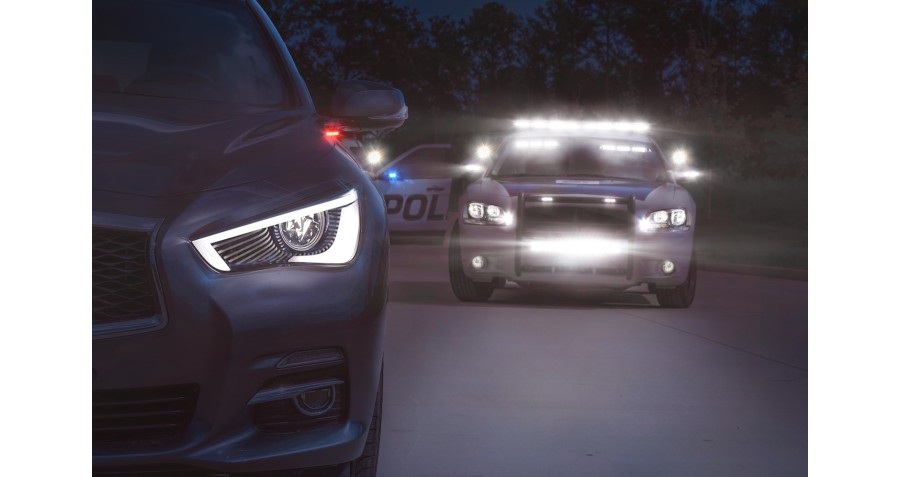
That familiar tone comes over the radio. A robbery is in progress, the suspect brandished a weapon and the bank is a long two miles away through rush-hour traffic. Time to light up on another code 3 call. Getting to the scene might be more dangerous than taking down the suspect as drivers fail to give way. A few others float through an intersection delaying responding units and slowing the response time.
By the time officers arrive on scene, the suspect is long gone. The teller describes him as about six feet tall with a medium build. Witnesses give a vague description of the vehicle into which he fled. The incident commander forms a plan and the search begins as units once again hit the congested streets looking for an “older model, black sedan.”
Law Enforcement is a tough business filled with frustrating moments like this. Officers have a daunting responsibility to maintain public safety, track down suspects and navigate busy streets, all while maintaining their own safety. Innovative automotive technologies seek to alleviate some of that burden with increased automation and layered warning systems.
Code 3’s Matrix is one such innovation. “It’s not just a lightbar and a siren, it’s a platform,” explains Sean Heieck, Director of Sales, Code 3 Americas and 16-year veteran of the LA County Sheriff’s Department. Police vehicles with fully integrated emergency lighting and warning systems are the future and it is happening today. “We need to be using technology to our advantage…officers should be focused on the suspect, not on switches,” Heieck added. Matrix enhances officer safety by tying the officer’s actions to the functionality of the lights and siren.
Customized automation adapts to conditions on the road and at the scene…
Night shift finally gets a decent tip on the robbery suspect along with the make and model of the car: both were last seen at a residence just outside of town. Two units are dispatched and on the way to the location, they spot the car. They light it up and with just one push of a button, the lights and siren switch to accommodate a felony stop. Front lights switch to bright white, the front and sides of the lightbar dim to maintain officers’ night vision and the rear lighting displays a red and blue pattern alerting approaching drivers.
The light and sound configurations are endless. Whatever the agency decides, the lighting and warning strategy can be easily programmed using an intuitive software interface. Current customers appreciate the system’s “click, drag, drop” functionality as well as its easy installation. Further refinements are being made to make the system more efficient and fully integrated with vehicle operations.
But what about that initial priority call that hampered officers’ response with slow-moving, unaware drivers clogging throughways? Code 3 recently partnered with tech innovator HAAS Alert to address that. The Connected Safety Solution powered by HAAS Alert’s Safety Cloud® uses digital alerts to warn drivers using connected devices to slow down and move over.
Millions of drivers are using the Waze™ App or other mapping solution to navigate on a regular basis. Many auto manufacturers are including technology to sync mobile devices and app functions to vehicles’ infotainment displays. If first responders equip a small transponder in their vehicles, they can transmit an additional layer of warning to give connected drivers extra time to react.
Additional warning can clear roads earlier and cut response times while enhancing overall public safety during emergency responses. Seconds count whether officers are interdicting criminal activity or drivers have enough advanced warning to avoid a collision.
As the officers in the first two units continue to give commands to the suspect, who is cooperating for now, two sheriffs’ units roll up to support. They engage an “on scene” mode with Matrix that slows the flash pattern, kills the siren and provides additional warning lights in the rear of the vehicles for traffic control.
These units also equip the Connected Safety transponder, which starts broadcasting a digital alert that warns drivers that police are “on scene” as well. Fortunately, traffic is light. Perhaps cars approaching the neighborhood received the alert a few hundred feet out and adjusted their routes to avoid the area.
As Code 3’s Sean Heieck expressed earlier, officers can better focus on the suspect and secure the scene safely.
“We are adapting with improvements in technology to protect public and officer safety by providing audio and visual warning,” concluded Heieck. Improvements in LED lighting, adapting to drivers’ behavior and auto manufactures fully embracing the digital age are driving innovation. Code 3 is reaching out to other industry leaders to bring next-gen technology to law enforcement and first responder agencies across the nation and around the globe. The threats to public safety are evolving and it is our shared responsibility to meet these challenges head on. Matrix and Connected Safety are just the beginning. Whatever the future holds, Code 3 is here to get you to code 4 safely and effectively.
Blog